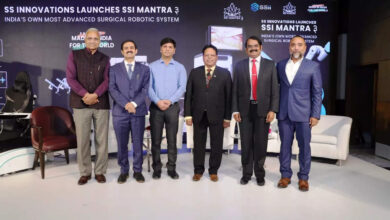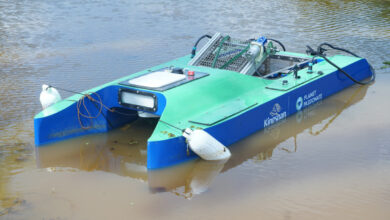FDA-approved surgical robots trend toward autonomy, study finds

A recent review published in the journal npj Digital Medicine examines the current categories of surgical robots that have been approved by the United States Food and Drug Administration (FDA) based on Levels of Autonomy in Surgical Robotics (LASR).
Study: Levels of autonomy in FDA-cleared surgical robots: a systematic review. Image Credit: Gorodenkoff / Shutterstock.com
About surgical robots
The first surgical robot to receive FDA clearance was the Automated Endoscopic System for Optimal Positioning (AESOP) in 1993. Through the 510(k) Premarket Notification pathway, AESOP was assigned moderate risk and classified as a Class II surgical device.
Compared to the da Vinci Surgical System by Intuitive Surgical, in which the surgeon uses the robotic arm to extend his reach, modern surgical robots are more complex and autonomous. For example, the TSolution One is both the planner and operator, whereas the surgeon is responsible mainly for supervising the instrument.
To date, there remains no defined platform to classify these different systems. Currently, the only way to classify these instruments is by using the system applied for industrial robots and self-driving vehicles.
Since 2015, the FDA has advocated for the term “robotically-assisted surgical devices” to emphasize that all cleared systems have no robotic autonomy, as they require the surgeon’s direct and continuous control. The surgeon is entirely responsible for the safety of the procedure.”
The automation of surgical robots is rapidly progressing, as is dependence on artificial intelligence, specifically machine learning (ML). As these systems continue to advance, concerns regarding the legal responsibility for automated surgical procedures have emerged, as well as whether the surgeon or robot can be considered responsible. It is also crucial to determine which competencies are required for additional training before these tools can be used.
About the study
The authors of the current study emphasize the need for uniform definitions and standards for surgical robotics across regulatory, standards, and medical organizations and bodies. The current study also examines the relative contribution of the surgeon and device during surgical procedures.
The review included all Class II surgical robots approved by the FDA since 2015. Each robot was examined using LASR criteria for autonomy classification.
What did the study show?
A total of 49 unique surgical robots were identified, 86% of which were Level 1 systems operated continuously by the surgeon and are otherwise referred to as ‘Robot Assistance.’ Four Level 2 ‘Task Autonomy’ systems, which were designed through programming to perform a specific surgical task autonomously, were also identified.
Three Level 3 systems, currently the most autonomous FDA-approved systems, were identified. These systems exhibit ‘Conditional Autonomy,’ as they can plan the procedure if presented with specific patient details. No Level 4 or Level 5 surgical robots were found; however, the researchers discuss the possibility of sudden drastic shifts in autonomy with relatively minor technological advances.
Predicate creep – a repetitive cycle of technology changes between 510(k) clearances that may result in the sudden introduction of devices with high levels of complexity – has been identified in surgical robotics.”
The first 15 robotic systems received clearance before 2015 and were subsequently approved for additional capabilities. Thereafter, 24 robots were introduced from Level 1 to Level 3. Throughout this period, task automation increased, with mostly Level 2 robots introduced since 2017.
When classified by the regulatory system, about 90% of surgical robots received 510(k) clearance, whereas the remaining systems were approved through the De Novo pathway. Clinical testing data was supplied for regulatory approval in 19 cases, including all Level 3, 75% of Level 2, and 30% of Level 1 robots.
Two of the robots claimed to have ML-enabled capabilities on their websites; however, their FDA summaries lacked evidence of these claims.
When examined by specialty, orthopedic assistive robots targeting the spine, knee, and hip comprised about 33% of all new systems. One of the three advanced Level 3 systems was in orthopedics for bone milling. Robotic systems for urology, general surgery, and neurosurgery were also identified.
Conclusions
In the future, LASR-based frameworks will be essential to ensure that more autonomous devices meet approval criteria emphasizing clinical safety. Another possibility is that all future advances in autonomy will enter Class III or high-risk devices, thus making premarket approval mandatory.
Although this may inhibit rapid innovation, these processes will ensure that stringent safety standards are followed in the approval of these novel devices. Importantly, because of these extended approval processes, the cost and duration of these approval processes may also increase.
The use of ML could cause significant errors to emerge by repetitively strengthening biased decision-making based on training data. This could become particularly concerning when automated tasks are performed.
The surgical setting is key to decision-making and risk determination. Therefore, additional research is needed to consider the clinical situation and the robotics system’s level of autonomy when determining risk.
Implementing regulatory frameworks that acknowledge varying levels of autonomy in surgical robots may help ensure their safe and effective integration into surgical practice.”
Journal reference:
- Lee, A., Baker, T. S., Bederson, J. B., & Rapaport, B. I. (2024). Levels of autonomy in FDA-cleared surgical robots: a systematic review. npj Digital Medicine. doi:10.1038/s41746-024-01102-y.



